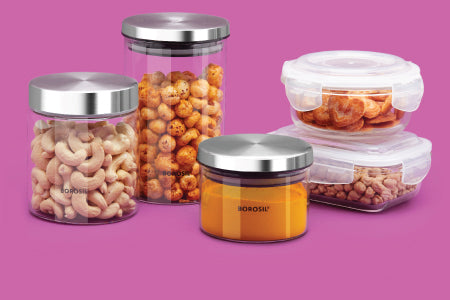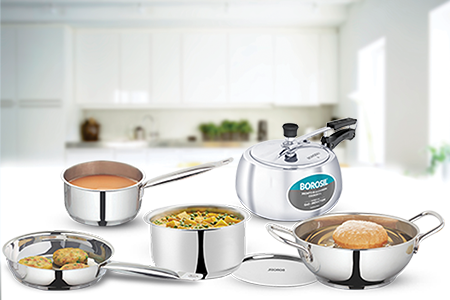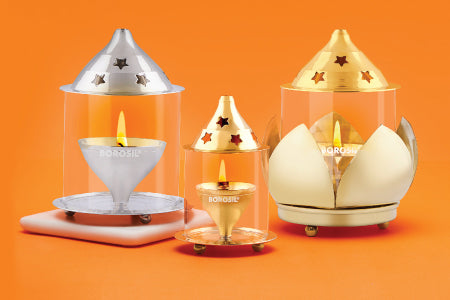
Delicious Basundi Recipe
A Sweet Symphony: Exploring the World of Basundi
Among the variety of desserts and sweets available all over India, the Basundi fan base is at a different level. From aromas to rich flavours and creaminess, it covers all! It is generally made in Gujarat, Maharashtra, and some parts of Karnataka using only basic ingredients such as sugar, milk, almonds and spices.
We will provide a step-by-step guide to making Basundi in two versions- the traditional way and one suitable for quick servings along with some tips and secrets to make it the best way. Also, we’ll discuss its history of origin and significance. So, now, let us begin our journey across the Basundi recipe!
How is Basundi Made? Your Step-by-step Guidebook
Basundi sweet, a beloved Indian dessert, truly captures the essence of Indian cuisine. It's crafted by slowly simmering whole milk until it transforms into a delightful treat. To enhance its flavour, aromatic spices like cardamom, nutmeg, and an assortment of chopped nuts are added.
Traditional Basundi Recipe
Ingredients:
• 4 cups full-fat milk
• 3-4 tablespoons sugar (adjust to taste)
• A pinch of saffron
• 1/4 teaspoon cardamom powder
• A pinch of nutmeg
Instruction:
→ Take a nice, heavy-bottomed pot and pour in 4 cups of rich, full-fat milk. Cook it on medium heat until the boil comes.
→ Now, here's the magic touch. As it bubbles and swirls, you'll notice a layer of cream forming on top, like nature's artwork.
→ While the milk is simmering, grab some saffron and sprinkle its golden magic into the mix. Add a dash of powdered cardamom, a hint of freshly grated nutmeg, and a sweet secret – sugar.
→ Keep stirring, and let the milk simmer for about 5 minutes. You'll see it thickening up.
→ After this, remove the pot from the flame. Let it cool down, then transfer it into a fancy serving bowl.
→ The final touch? Sprinkle some finely chopped nuts on top. They're like the supporting characters that make the story complete. Let your creation chill in the refrigerator until it's ready to steal the show.
Instant Easy Basundi Recipe
Ingredients:
• 2 cups full-fat milk
• 1/2 cup + 2 tablespoons sweetened condensed milk (adjust to taste)
• A pinch of saffron
• 1/4 teaspoon cardamom powder
• A pinch of nutmeg
• Chopped nuts (cashews, pistachios, almonds)
Instructions:
→ Start by rinsing your heavy-bottomed pot with water. This prevents the milk from sticking to the bottom layer.
→ In the pot, warm up two cups of full-fat milk.
→ While the milk is heating, prepare the saffron. Mix a pinch of saffron with two tablespoons of hot milk in a small bowl and set it aside.
→ Once the milk starts to boil, reduce the heat to a simmer and let it cook for 5-7 minutes. Stir occasionally.
→ Add half a cup plus two tablespoons of sweetened condensed milk. Make sure to remove any cream stuck to the pot's edges. Continue cooking the Basundi until it thickens. (Generally, it takes about eight minutes.)
→ Add cardamom powder, nutmeg, saffron-infused milk, and chopped almonds to your taste. Stir well and cook for another minute.
→ Transfer the Basundi to a serving bowl, let it cool, and then refrigerate it. You can enjoy it with poori, either hot or cold.
Some Tips for Tasty Basundi Every Time!
Consistent Stirring: While simmering the milk, stir it regularly to prevent the milk solids from sticking to the bottom. This ensures a smooth and creamy texture.
Full-Fat Milk: Always use full-fat milk for the creamiest Basundi.
Sweetness Control: Adjust the sweetness level to suit your taste. You can add more condensed milk or sugar as needed.
Variety in Nuts: Experiment with different nuts like cashews, pistachios, and almonds to create diverse flavours.
Serve Right: Basundi is delightful as a dessert or paired with warm, fluffy pooris for a wholesome meal.
Origin and Significance of Basundi
Basundi dish has its roots in the western states of India, where dairy products play a significant role in the culinary traditions. Its preparation dates back generations, and it's often associated with festive occasions and celebrations.
This creamy dessert holds a special place during festivals like Diwali and weddings. Its richness symbolises prosperity and sweet life's moments. Basundi, with its comforting warmth and indulgent taste, can bring families and friends together.
Exploring Regional Variations
Like many traditional dishes, Basundi has regional variations that reflect the unique culinary traditions of different Indian states. Here are a few regional twists to savour:
Basundi of Gujarat: In Gujarat, Basundi is usually topped with charoli seeds and scented with saffron, which imparts a distinct nutty and floral flavour to the dish.
Maharashtrian Basundi: Known for its simplicity, Maharashtrian Basundi is often flavoured with only cardamom and garnished with slivered almonds and pistachios.
Dharwad Peda from Karnataka: In Dharwad, Karnataka, people transform Basundi into a wonderful dessert called "Dharwad Peda."
Rabri - A North Indian Cousin: While Basundi is popular in western India, its North Indian cousin, Rabri, shares a similar essence. Rabri is thicker and often served with jalebi.
Conclusion
Many people have fallen in love with the sweet dish basundi because of its velvety consistency and fragrant spices. Whether you use the tried-and-true method of cooking the sweets over low heat for a lengthy period or the speedier variation that employs condensed milk, the result is a delectable dessert fit for any occasion. So gather your supplies and follow our step-by-step tutorial. Savour every bite of this delectable symphony.
FAQs
1. Can I use unsweetened condensed milk for the quick Basundi recipe?
Yes. You can use unsweetened condensed milk and add sugar to taste during simmering.
2. What's the best way to serve Basundi?
Basundi is delightful as an after-meal dessert or paired with soft pooris for a festive treat.
3. How long does Basundi stay fresh?
Store Basundi in the refrigerator for 2 to 3 days in a sealed container.





















